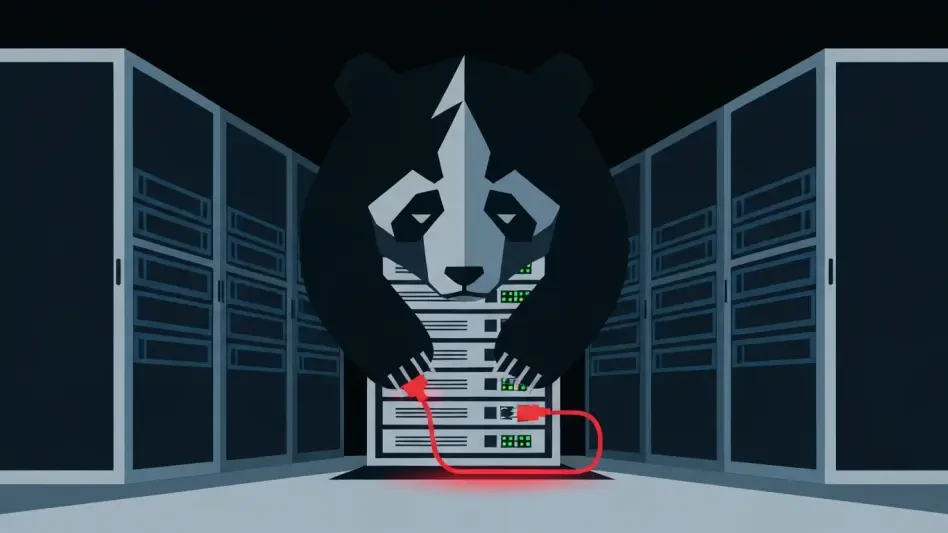In an era where digital threats loom large over industrial giants, a recent cyberattack on Bridgestone Americas, a prominent tire and rubber manufacturer, has underscored the vulnerability of critical infrastructure in the manufacturing sector. Early one Tuesday morning, at approximately 2:00 AM, a breach was detected that targeted the company’s SCADA (Supervisory Control and Data Acquisition) systems, essential for overseeing industrial processes across North American facilities. This incident temporarily halted production at key plants, including locations in Aiken County, South Carolina, and Joliette, Quebec, raising alarms about the potential scale of disruption. Despite initial fears from local officials that the attack could impact all regional operations, the scope was swiftly contained to specific sites. This event serves as a stark reminder of the persistent risks facing operational technology (OT) systems and highlights the importance of robust cybersecurity measures in safeguarding production continuity against sophisticated digital adversaries.
Swift Detection and Containment Strategies
The rapid identification of the cyberattack on Bridgestone Americas was pivotal in limiting its impact on North American operations. Within hours of detecting the breach at 2:00 AM, the company’s cybersecurity team isolated compromised VLANs (Virtual Local Area Networks) to prevent the threat from spreading across the network. This decisive action minimized the disruption to a handful of facilities rather than the entire regional footprint, as initially feared by local stakeholders. A dedicated Cybersecurity Operations Center (CSOC) was activated for round-the-clock monitoring, ensuring that any further anomalies could be addressed immediately. By leveraging pre-existing security protocols like multi-factor authentication (MFA) and network segmentation, the breach was contained before it could escalate into a more severe crisis. Importantly, early assessments confirmed that no customer or employee data had been compromised, preserving trust among key stakeholders during this critical period of uncertainty and response.
Equally significant was the structured approach to resuming operations after the initial containment. Bridgestone Americas prioritized verifying unencrypted offline backups to ensure data integrity before restarting production systems. Endpoint Detection and Response (EDR) tools were updated with new Indicators of Compromise (IoCs) to bolster defenses against similar threats in the near future. Production downtime was kept to a minimum, thanks to well-prepared Disaster Recovery (DR) and Business Continuity (BCP) plans that guided the recovery process. Employees at affected sites were given options to either remain on-site for maintenance tasks with full pay or leave without compensation, reflecting a balanced strategy in workforce management during the crisis. This meticulous response not only restored normalcy swiftly but also demonstrated the resilience embedded in the company’s operational framework, setting a benchmark for handling such incidents in the manufacturing industry.
Lessons from Past Threats and Current Resilience
Reflecting on historical cyber threats provides valuable context for understanding Bridgestone Americas’ response to this recent incident. A notable ransomware attack in 2022, attributed to the LockBit group, bore similarities in tactics to the current breach, though no specific threat actor has been identified this time. Such recurring patterns highlight the ongoing vulnerability of industrial control systems like SCADA to sophisticated cyberattacks. The company’s ability to draw on past experiences allowed for a more informed and effective mitigation strategy, underscoring the importance of learning from prior incidents. Robust pre-existing measures, including continuous monitoring and network segmentation, played a crucial role in early threat identification, preventing a broader impact on operations. This resilience reflects a deep commitment to evolving cybersecurity practices in an industry where digital and physical operations are increasingly intertwined.
Beyond immediate response, Bridgestone Americas has shown a forward-looking stance by initiating a comprehensive forensic investigation to uncover the attack vector and any lingering vulnerabilities. Attention to patch management gaps, potential zero-day exploits, and configuration hardening indicates a proactive effort to fortify defenses against future breaches. The company’s focus on transparency is evident in its commitment to publishing a detailed post-incident report once findings are validated, fostering trust and shared learning within the industry. This approach not only addresses the current incident but also prepares the organization for emerging threats over the coming years. By prioritizing both recovery and prevention, Bridgestone Americas sets an example for other manufacturing firms grappling with the intersection of operational technology and cybersecurity risks in an ever-evolving threat landscape.
Building Stronger Defenses for Tomorrow
Looking ahead, the cyberattack on Bridgestone Americas serves as a critical reminder of the need for continuous investment in cybersecurity within the manufacturing sector. The incident, though contained with minimal impact on data integrity, exposed the persistent targeting of OT systems vital to production. Strengthening defenses will require ongoing updates to security frameworks, incorporating the latest threat intelligence and advanced tools to detect and mitigate risks. Collaboration with industry peers to share insights on emerging attack patterns could further enhance collective resilience. As digital threats grow more sophisticated, adopting a proactive mindset—focused on regular system audits and employee training—becomes essential to safeguarding operations. This event underscores that cybersecurity is not a one-time fix but a dynamic process requiring vigilance and adaptation.
In retrospect, Bridgestone Americas navigated this cyber challenge with commendable efficiency, leveraging established protocols to limit disruption and ensure a swift return to normalcy. The absence of data loss and the quick resumption of production at affected plants highlighted the effectiveness of prior planning and response mechanisms. Moving forward, the lessons learned from this incident prompted a renewed focus on identifying weaknesses through forensic analysis and reinforcing security measures. For other companies in the sector, this experience emphasized actionable steps such as enhancing network segmentation and prioritizing disaster recovery plans to mitigate similar risks. Ultimately, the response to this breach illustrated that resilience in the face of digital threats hinges on preparation, rapid action, and a commitment to continuous improvement, offering a roadmap for addressing future challenges in an increasingly connected industrial landscape.








